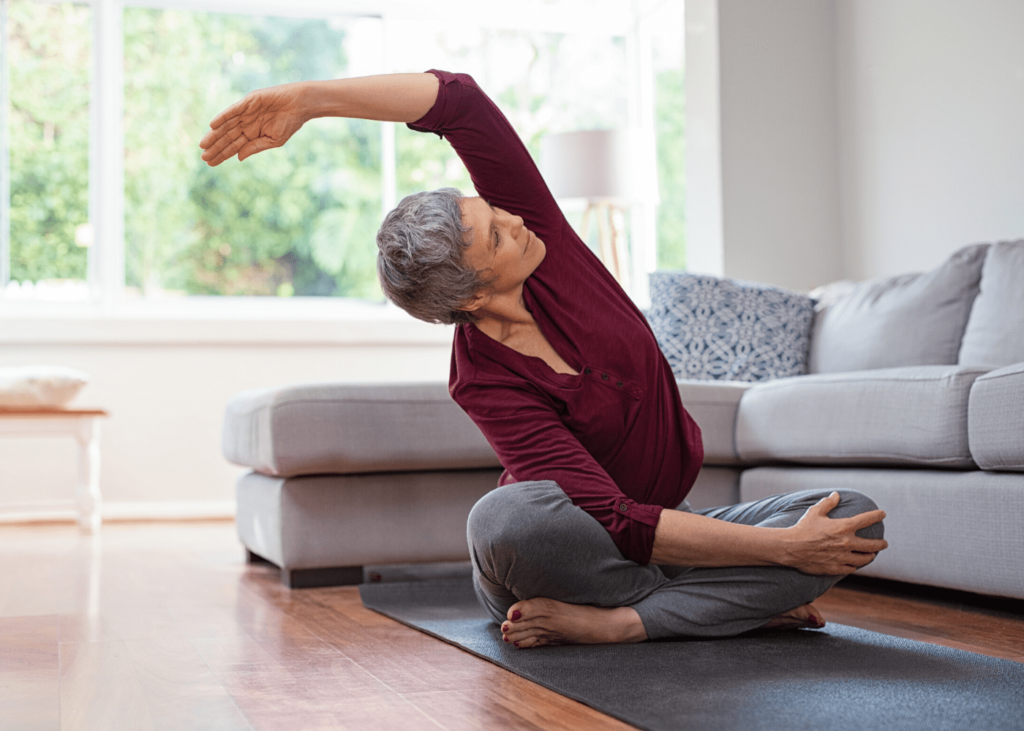Struggling to touch your toes? Muscles feeling tight?
This can be a sign of a lack of flexibility, which can limit mobility and our enjoyment to move and be active.
Flexibility isn’t just something some of us are born with and others not. Far from it. It’s something that can be trained and improved. It’s likely your daily routine is impacting any reduced flexibility.
Luckily, regardless of how inflexible you are, there are specific exercises designed to help improve flexibility and offer a solution to even the tightest of hamstrings.
This article highlights the key benefits of why you should take flexibility seriously and then identifies the best exercises anyone can do to help tackle tight muscles and inflexible movements.
Benefits of Improved Flexibility
Improving flexibility isn’t solely to impress friends and family by showing off that you can touch your toes (although that’s a nice perk!)
Flexibility is a core pillar for overall fitness. Tight muscles put more pressure and strain on joints, increasing the risk of injury. If muscles aren’t loose, they are more likely to cause pain and lead to short-term and long-term muscle and joint injuries.
Those with bad flexibility are much more likely to pull a muscle during a workout or even just during daily life. They are also more likely to wake up with a “random” pain in their neck, back or other joints. These “random” aches and pains are often a result of bad posture, tight muscles and pressure on joints, all related to flexibility.
But flexibility goes beyond just mitigating injury risk, it also frees up your body to achieve so much more during exercise, sport and an overall active lifestyle. By being more flexible, you will find it much easier to move without pain or limitation. This means you can push yourself to achieve more during a workout and can benefit from the added intensity and movements during the workout.
For example, ankle flexibility actually has a huge impact on squatting performance (our blog on the Asian squat helps provide further tips for improving your squat). If you want to add more weight to your squat, focusing on ankle flexibly can often be the most efficient thing to do. This illustrates the complexity of movement and how the body works in unity to perform movements.
Becoming more flexible also brings with it benefits such as improved posture and balance. It helps reduce uneven muscle development that can lead to bad posture.
Flexibility exercises and training help to build strength and stability, while also making you feel more supple and pain-free. This also leads to better balance and range of motion.
It may not be as trendy as strength training or Tabata workouts, but exercises and stretches that improve flexibility are as important as any fitness training programme you follow if you want to feel fitter and healthier.
How to Approach Flexibility Training
Determining flexibility is actually very subjective. Someone being able to touch their toes may appear flexible, but if they are a professional dancer or gymnastics, the flexibility requirements may be much higher.
Therefore, its important we work backwards and identify what it is we actually want to achieve. Do we want to improve our range of motion for specific exercises? Do you want to complete yoga routines easier? Do we want to push our bodies to the very limit of movement and mobility?
The answer to these sorts of questions will influence what type of flexibility training and exercises are best suited to you.
Flexibility Exercises for Beginners
The following exercises are all beginner friendly. It doesn’t matter if you are just getting started or a seasoned pro, these basic exercises get the job done. Obviously, if you have any existing pains or conditions, seeking the help and advice from a health professional is always worthwhile.
Like any type of exercise for beginners, start as gentle as possible and over time, increase the length and intensity. To begin with, just go through the motions and ensure you feel comfortable with the movements.
You won’t suddenly feel as supple as a cat within a few minutes of doing these exercises. The benefits will only be seen after commitment and dedication.
Poor flexibility shouldn’t be confused with the DOMS – muscle soreness after an intense workout. Our blog on how to prevent the DOMS, helps identify tips to reduce muscle soreness after exercise.
Flexibility Exercise Workout Routine
The video below highlights lots of the best exercises to improve flexibility. Follow along and start swapping that feeling of sore muscles and pains for supple joints and loose muscles.
This flexibility training workout includes exercises for upper body and lower body, targeting all the potential areas that could limit flexibility.
So what are you waiting for, give it a go today!
